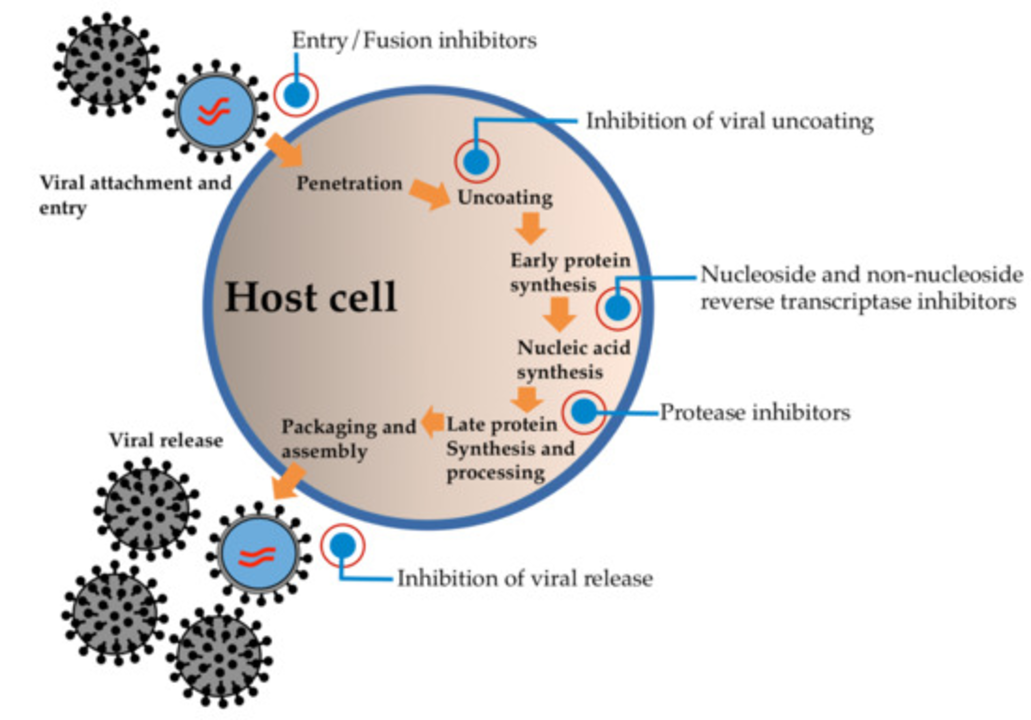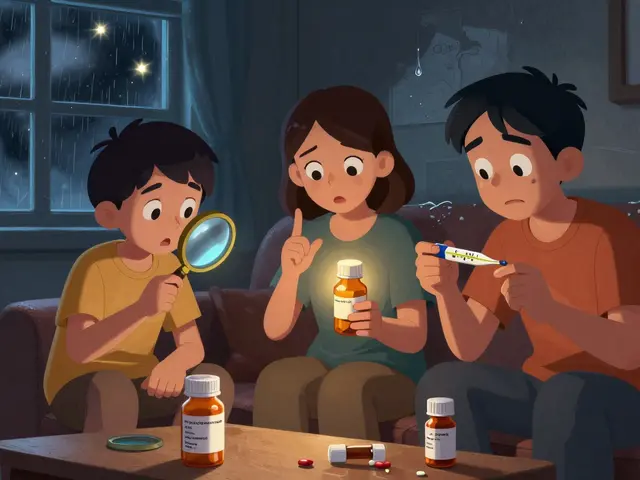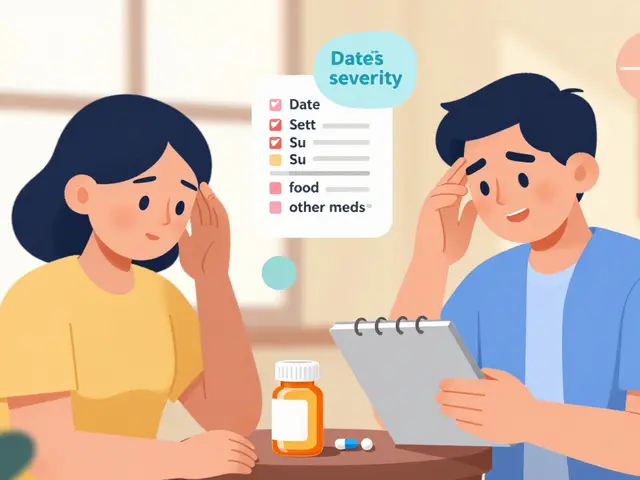The Science Behind Daclatasvir: How Does It Work?

Understanding Daclatasvir: A Brief Introduction
As a blogger, I always try to stay informed about the latest advancements in the medical world. One such recent development that caught my attention is Daclatasvir, a medication used to treat Hepatitis C infection. With millions of people around the world affected by this life-threatening disease, it's important to understand how this drug works and why it's considered an essential tool in combating Hepatitis C. In this article, I will delve into the science behind Daclatasvir and explain its mechanism of action in simple terms. So, without further ado, let's get started!
Exploring the Hepatitis C Virus (HCV): The Target of Daclatasvir
Before we can discuss how Daclatasvir works, it's crucial to understand the basics of the Hepatitis C Virus (HCV), the primary target of this medication. HCV is an RNA virus that primarily affects the liver, leading to inflammation and, in some cases, severe liver damage. The virus is transmitted through blood-to-blood contact, and if left untreated, it can result in cirrhosis, liver cancer, or even liver failure.
There are several genotypes of HCV, each with its own specific characteristics. This variability makes it challenging to develop a universal treatment for all HCV infections. However, Daclatasvir has shown promising results in combating various genotypes of the virus, making it a valuable weapon in the fight against Hepatitis C.
The Role of NS5A Protein: A Key Player in HCV Replication
Now that we have some background information on the Hepatitis C Virus, let's take a closer look at the role of the NS5A protein in the replication of the virus. NS5A is a non-structural protein that plays a crucial part in the HCV life cycle, particularly in the replication and assembly of viral particles. Inhibiting the function of this protein is a primary target for many antiviral drugs, including Daclatasvir.
The NS5A protein has a complex structure, with three different domains that perform various functions throughout the virus's life cycle. Of these domains, Domain 1 is the primary target for drugs like Daclatasvir, as it is essential for the formation of the replication complex and the production of new viral particles.
Daclatasvir: An NS5A Inhibitor That Stops the Virus in Its Tracks
With a basic understanding of the Hepatitis C Virus and the role of the NS5A protein in its replication, we can now explore how Daclatasvir works to combat the infection. Daclatasvir is classified as an NS5A inhibitor, meaning that it directly targets the NS5A protein, preventing it from performing its essential functions in the replication and assembly of the virus.
By binding to the NS5A protein, Daclatasvir disrupts the formation of the replication complex, effectively halting the production of new viral particles. This, in turn, reduces the overall viral load in the patient's body, allowing their immune system to gradually clear the infection. As a result, Daclatasvir has proven to be highly effective in treating various genotypes of HCV, often in combination with other antiviral medications.
Combination Therapy: Boosting the Effectiveness of Daclatasvir
While Daclatasvir is a potent weapon against HCV on its own, it is often used in combination with other antiviral medications to increase its effectiveness. One such combination is Daclatasvir and Sofosbuvir, which has been shown to have a high cure rate for various HCV genotypes. The combination of these two drugs targets different aspects of the virus's life cycle, creating a powerful one-two punch that effectively eliminates the infection.
Additionally, the use of combination therapy can help to reduce the likelihood of drug resistance developing in the virus. By targeting multiple aspects of the virus's life cycle simultaneously, it becomes more challenging for the virus to mutate and develop resistance to the medications being used. This, in turn, helps to ensure the long-term effectiveness of these treatments.
Concluding Thoughts: The Importance of Daclatasvir in the Fight Against Hepatitis C
As we've seen throughout this article, the science behind Daclatasvir is both fascinating and highly relevant to the millions of people affected by Hepatitis C worldwide. By targeting the NS5A protein, which plays a crucial role in the replication and assembly of the virus, Daclatasvir effectively stops the virus in its tracks, reducing the viral load and allowing the patient's immune system to clear the infection.
Furthermore, the use of Daclatasvir in combination with other antiviral medications, such as Sofosbuvir, has proven to be highly effective in treating various genotypes of HCV, with high cure rates and a reduced likelihood of drug resistance. Thus, Daclatasvir represents a significant step forward in the battle against Hepatitis C, offering new hope to those affected by this devastating disease.
7 Comments
yogesh Bhati
Yo, ever think how a tiny protein can dictate the fate of a whole organ? Daclatasvir basically whispers to the NS5A, telling it to chill out, and the virus gets lost in its own replcation maze. It's like a philosophical protest against the virus's ambission, a tiny rebellion at the molecular level. The drug's magic lies in its ability to jam the replication complex, making the virus feel like it hit a dead end. So next time you hear about NS5A, imagine a tiny lockpick doing a quiet coup in your liver.
Akinde Tope Henry
Our nation deserves the best medical tools. Daclatasvir proves we can fight HCV head on
Brian Latham
Honestly, this article just rehashes the same old stuff.
Barbara Todd
I love how you liken the virus’s replication to a maze, it really paints a vivid picture for readers.
The way Daclatasvir sneaks into the NS5A pocket is like a master thief bypassing a high‑security vault.
What’s even cooler is that this drug doesn’t just stop one genotype; it shows versatility across the board.
When you combine it with Sofosbuvir, the two work like a dynamic duo, covering different stages of the viral life cycle.
That synergy reduces the odds of resistance, which is a huge win for patients who have struggled with older regimens.
Clinical trials have reported cure rates soaring above 95 percent in many groups, which is nothing short of remarkable.
Moreover, the side‑effect profile is relatively mild, making adherence much easier for real‑world patients.
I remember reading a case where a patient who had failed prior therapy finally cleared the virus after the Daclatasvir‑Sofosbuvir combo.
It’s a testament to how targeting multiple viral mechanisms can outsmart the virus’s ability to mutate.
From a public‑health perspective, broader access to these tablets could dramatically cut the global HCV burden.
Some countries are already negotiating price reductions to make the therapy more affordable.
If more low‑income regions get these drugs, we could see a steep decline in new infections within a decade.
Your article does a great job breaking down the science without drowning readers in jargon.
Keep up the excellent work, and maybe next time you can dive into how resistance‑associated substitutions are monitored.
Overall, Daclatasvir is a shining example of rational drug design meeting real‑world impact.
nica torres
Exactly! Investing in cutting‑edge treatments like Daclatasvir can boost our healthcare game. Let’s keep the conversation going and push for wider access – the world will thank us.
Dean Marrinan
Oh wow, a one‑liner critique? 🙄 That’s about as deep as a puddle in the Sahara. But hey, at least you’ve mastered the art of minimal effort. 🎭 Daclatasvir does more than just “rehash” – it’s a game‑changer for HCV, and that’s worth a few extra words, don’t you think? 🌟
Oluseyi Anani
While the science is fascinating, we must also remember the ethical duty to ensure these life‑saving drugs reach every patient, regardless of geography or income. Health equity isn’t just a buzzword; it’s a moral imperative that we, as a global community, cannot ignore. By supporting fair pricing and robust distribution networks, we honor the very purpose of medical innovation – to alleviate suffering for all.






Write a comment